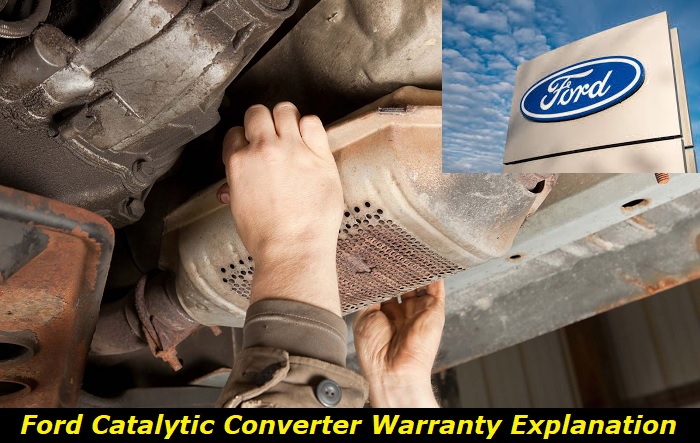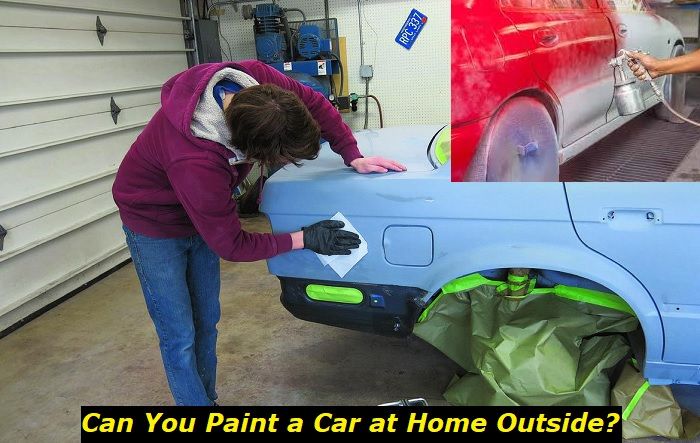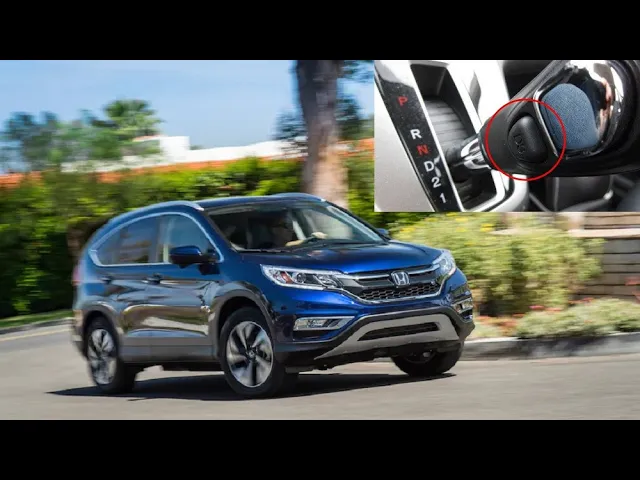Combustion engines were pretty plain before 1975. Car engines were designed to mainly power the car and did nothing about mitigating environmental damage caused by its exhaust gases. The exhaust gases include harmful gases such as carbon monoxide, nitrogen oxides, and hydrocarbons. It was agreed that these exhaust gases were dangerous and vehicles should have a mechanism to reduce their emissions. This was when catalytic converters became mandatory in all vehicles starting in 1975.
Today, we take a deeper look at the Ford catalytic converter. First, we explore what the warranty covers and how this warranty works. At the end of the article, you should easily understand what a catalytic converter is and its role in your vehicle. But more importantly, you will better understand how the Ford catalytic converter warranty works.

What is a catalytic converter?
A catalytic converter is a part of the exhaust system of the vehicle. It converts harmful exhaust gases from the engine into safe gases we can breathe. For example, the harmful nitrogen oxides, hydrocarbons, carbon, and other harmful gases get converted into Co2 and water vapor. A catalytic converter is an oval metal object found under the vehicle. It is located between the engine and the muffler.
Inside the catalytic converter is a honeycomb made from a combination of special metals; palladium, platinum, and rhodium. This part works in two stages;
- When the exhaust gases enter the catalytic converter, it is exposed to special metals, and the nitrogen oxides are separated into nitrogen and oxygen. As the oxygen passes through, nitrogen gets trapped inside the converter.
- The second stage of purifying the exhaust gases involves breaking down unburnt hydrocarbons and carbon monoxide by oxidizing them over a metal catalyst.
Understanding the Ford catalytic converter warranty
The federal government requires all new vehicles to have a warranty. The catalytic converter is among the items required to be under a US vehicle warranty. This is in line with ensuring that the vehicles on the road adhere to federal environmental safety policies.
The Ford warranty on exhaust systems is divided into two;
- Emissions defect warranty and
- Emissions performance warranty
The Ford catalytic converter is under the emissions defect warranty. When it is sold, your Ford is equipped to meet the Environmental Protection Agency (EPA) emissions regulations. Under this cover, the catalytic converter is free from emissions-related defects arising from factory workmanship or materials used. All this is in conformity with the EPA regulations. If your Ford has an emissions-related defect, you will not be charged for diagnosis, replacement, adjustment, or repair of the parts under the warranty.
How long is the catalytic converter warranty?
Under the EPA regulations, a car manufacturer must sell a new car with a 2-year or 24,000 miles warranty, whichever comes first. Ford has upped these figures to 3 years or 36,000-mile, standard bumper-to-bumper warranty.
If you have a passenger car or a light-duty truck (vehicles of up to 8,500 pounds GVWR), Ford offers an extended warranty of 8 years or 80,000 miles, whichever comes first, on the emissions defect warranty. The warranty covers the catalytic converter, onboard emissions diagnostic devices, and electronic control unit (ECU).
For vehicles whose GVWR is over 8,500 pounds but not surpassing 19,500 pounds, Ford backs them with a 5-year or a 50,000-mile warranty, whichever comes first. These vehicles are categorized as heavy-duty (HDV), and this warranty covers all emission parts. In addition, this warranty includes coverage of parts whose failure would increase the vehicle's emissions of harmful gases.
What conditions should you satisfy for the catalytic converter warranty to be valid?
Ford offers warranties under certain conditions. You must fulfill all the requirements indicated in the user manual during the warranty period for the warranty to be valid. You must satisfy the following conditions;
- The vehicle must not be tampered with, misused, or abused. This applies to any change to the exhaust system. Pimping the car to make it sound aggressive often requires tampering with the exhaust pipe, muffler, and other exhaust parts.
- You must maintain and operate the vehicle as per the user manual and warranty instructions. Use the prescribed engine oil and regularly service the vehicle per the user manual.
- If your vehicle fails to conform to the national EPA standards, the warranty is still valid. EPA should determine this failure to conform.
- The warranty kicks in if you are subject to a penalty or sanction under federal, state, or local law because the vehicle doesn't conform to emissions standards.
It is also worth noting that:
- Under California law, for vehicles whose GVWR is 14,000 pounds or less and are eligible for a 3-year or 50,000 miles (whichever comes first) warranty, the following extra conditions apply.
- If your vehicle fails a smog check inspection, Ford will undertake all necessary adjustments and repairs to the exhaust system to ensure the vehicle passes the inspection. In the warranty document, this falls under the 'performance warranty'.
- If an emissions-related component of your vehicle turns out to be defective, Ford will repair or replace the part for free. However, this condition falls under the 'defective warranty' in the warranty contract.
If the vehicle's warranty is 7 years or 70,000 miles (whichever comes first):
- If an emissions component regarded as high-priced is defective or if its failure is shown to cause your Ford to fail the smog check inspection, this part will be repaired or replaced by Ford. This will clause sorts you in the long-term.
- For vehicles whose GVWR is over 14,000 lbs, the warranty covering the catalytic converter and emissions system covers the parts, which, if they fail, would cause the vehicle to emit more air conditioning refrigerants.
- The warranty for gasoline-powered engines gives 5 years or 50,000 miles (whichever comes first).
- The warranty for diesel-powered engines and vehicles is 5 years or 100,000 miles (whichever comes first).
Why it is important to read the warranty first
Many people, especially young people, feel the urge to pimp their vehicles. Of course, you can change the tire size or the car seats, among other things. But if you undertake any of these changes, you may inadvertently invalidate your warranty. That's why reading the manual alongside the warranty is advisable first.
In the warranty document, Ford will state any modification to the vehicle will not necessarily affect your warranty. However, the company further says that such modifications or conversions must be up to Ford's standard of workmanship and materials. In other words, it is advisable to consult with a Ford dealership whenever you think of doing some modifications, especially those touching on the catalytic converter.
Tampering with the catalytic converter will not only invalidate the warranty, but it is also illegal. In addition, tampering with the catalytic converter will make the exhaust emissions from your vehicle change, making your vehicle fail at the smog check inspection. Remember, Ford has assured you they will foot the bill if your vehicle fails the test. But if there is any tampering with the catalytic converter or other emissions system parts, the warranty becomes invalid, and you are on your own.
Your Ford comes with a warranty when it's new and runs up to the time the vehicle covers the prescribed mileage or when the warranty time lapses. The warranty is still valid even when you buy a used Ford from an individual or dealership, provided the previous owner observed the user manual and the warranty terms and conditions.
Can you extend the catalytic converter warranty?
The Ford catalytic converter changes from year to year and from one region or country to the next. It is imperative that you understand the Ford warranty terms and their implications because of your location. In the UK, for example, the standard warranty for a new Ford is 3 years or 60,000 miles or whichever comes first.
A subsequent owner of a car can enjoy the Ford catalytic converter warranty. If you buy a used Ford, the seller can transfer the warranty to you. However, this can only happen with a Ford-approved used car. Buying such a vehicle assures you of a 2-year guaranteed warranty. Such a vehicle must come with all service schedules and repair history for you to continue enjoying the warranty.
When your catalytic converter warranty has expired, you can opt to extend the warranty up to 150,000 miles. The extended warranty can be bought from Ford dealerships. Even though quite expensive, such a warranty can save you a lot of money whenever you encounter a serious emissions system problem.
Conclusion
The Ford catalytic converter has been designed and made following particular in-house rules that align with governmental regulations and policies. This being the case, the warranty offered for this component is specific, and Ford covers it. To avoid any danger of being told you have breached the warranty terms, ensure that anything concerning this part or emissions system is handled by an authorized dealership, especially during the warranty period.
About the authors
The CarAraC research team is composed of seasoned auto mechanics and automotive industry professionals, including individuals with advanced degrees and certifications in their field. Our team members boast prestigious credentials, reflecting their extensive knowledge and skills. These qualifications include: IMI: Institute of the Motor Industry, ASE-Certified Master Automobile Technicians; Coventry University, Graduate of MA in Automotive Journalism; Politecnico di Torino, Italy, MS Automotive Engineering; Ss. Cyril and Methodius University in Skopje, Mechanical University in Skopje; TOC Automotive College; DHA Suffa University, Department of Mechanical Engineering





Add comment